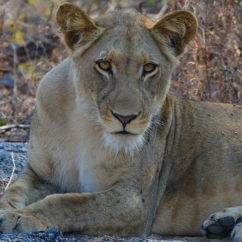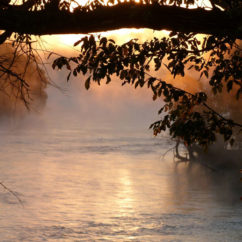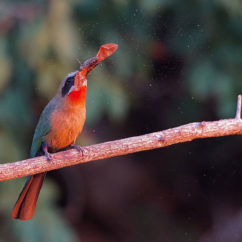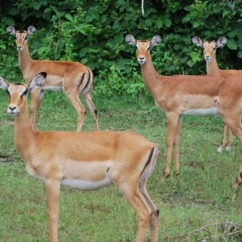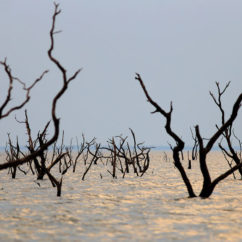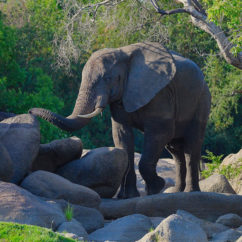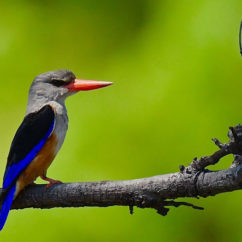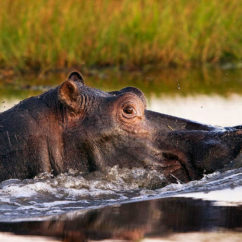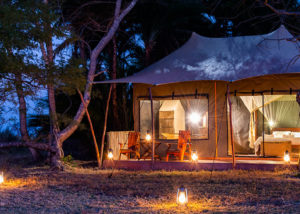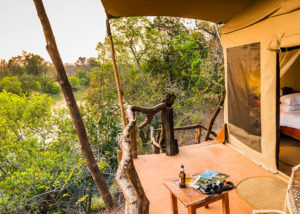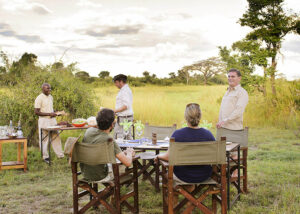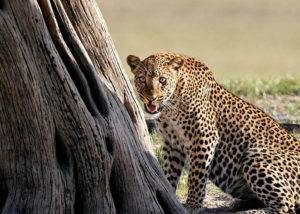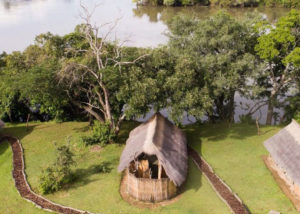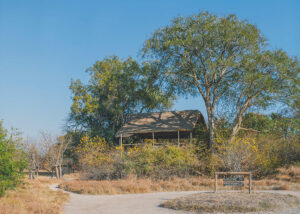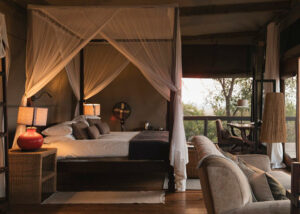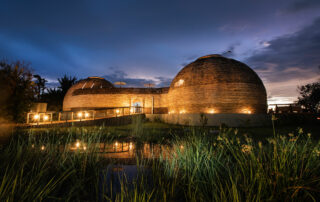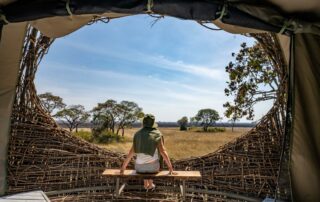KAFUE NATIONAL PARK

Found in the centre of western Zambia, Kafue is the oldest and largest of Zambia’s national parks. It covers a massive 22 400 km² / 8 650 mi².
Founded in the 1920s and formally established as a national park in the 1950s by the legendary Norman Carr, Kafue is one of the largest reserves in the whole of Africa. Despite its size and prominent location only two hours’ drive from Livingstone, it remains little-known and largely unexplored with vast tracts of its virgin bush still untouched. Thanks to its size and variety of habitats, Kafue holds a fantastic diversity of wildlife.
In recent years it has seen a well-managed growth in the number of safari camps and lodges that operate in and around the park. This interest has brought with it more visitors and investment to the area, notably in infrastructure with a number of well-graded roads and airstrips.
As a consequence of the increasing interest and benefits in terms of investment this brings, the wildlife is beginning to enjoy an increased level of protection by the Zambian Wildlife Authority (ZAWA), always aided and supported by the operators in and adjoining the park.
MORE INFORMATION
- Area: 22 400km² / 13 900mi²
- Founded in: 1924
- Provinces: North-Western, Central and Southern Zambia
- Co-ordinates: -14.386797,26.152954
Temperature-wise, Kafue is mild due to its altitude, averaging 1 100m / 3 600ft above sea level. It is generally cooler compared to the Luangwa or Zambezi valleys in October and November and, in fact, Kafue reaches 0°C / 32°F in winter (June to August) in some areas.
The park is well serviced by a number of all-year airstrips, notably at Chunga, Ngoma and Lufupa that enable tourists to make the most of the park in any of its ever-changing seasons.
The dry season runs from June to October, with most of the park being inaccessible during the wetter months of November through to April. Inaccessibility, however, need not be a deterrent to those wanting to visit Kafue in the ‘green’ season as it is a spectacular time of year and the lush greenery is something really to behold. The trick is visiting the camps that do stay open for 12 months (or as close as possible to) in the central and northern sections of the park.
It is possible to reach the Itezhi-Tezhi Dam all year round, too. The dry season does, however, enable better driving and game is generally easier to view in the drier months.
The Busanga Plains area is still strictly only accessible from early July (depending on water levels) until early November. This area is a floodplain and unless you enjoy swimming with crocs and hippos then unfortunately you must visit in these months! There is an airstrip at Busanga that facilitates access to the camps, some of which don’t operate in the green season.
Boat cruises are available from most of the river-based camps and lodges and are available all year around, although water levels do change dramatically through the year. Fishing is possible at selected spots only and there are restrictions on the number you catch and keep for the pot. There is a strict off-season to allow spawning and breeding without disturbance (between November and March).
Canoeing trips are also available, notably at Kaingu.
Kafue is bisected by the main M9 or Mongu Road. This is tarred and allows for easy access, even by 2-wheel drive vehicles. The drive can take three to four hours to reach the Hook Bridge. Do NOT attempt to drive the relatively extensive internal road and game drive network in a 2-wheel drive vehicle: 4×4s are a must. Do NOT even attempt self-driving in the park in the wet months as the black-cotton soil is notorious and plentiful. It is very thick and ‘sticky’ and there is an extremely high chance that you will be stranded.
Notable roads to avoid from November to June are the road from Hook Bridge to Lufupa and further north to Moshi, Kabanga and Busanga. In the south of the park, heading south from Ngoma and Itezhi-Tezhi towards Dundumwezi and Nanzhila is not advisable when wet and needs local knowledge. The road to Chunga from the M9 is well graded and generally accessible 12 months of the year.
The park can also be accessed from the tourist hub of Livingstone in the south, again on a well-graded road, reaching Dundumwezi Gate after three or so hours. Kafue is also accessible by plane, with many airstrips, some all-weather, such as Ngoma, Chunga and Lufupa.
From Lusaka – Take the main M9 tar road due west to Mumbwa. If you plan to visit the north-eastern camps, then go into Mumbwa town (124km / 77mi from Lusaka) and take the left turn at the roundabout by the filling station. Continue on this road out of Mumbwa on the D181 gravel/graded road to your destination.
To reach the central and southern sectors using the Spinal Road – After passing the turn off for Mumbwa, stay on the main M9 road, heading west for 38km / 24mi to the Nalusanga Entrance Gate. Continue on the M9 for another 80km / 50mi, drive over Hook Bridge and, after a further 7km / 4mi, turn left on to the 21K road (ignore the 17km road turn-off). The Spinal Road is reached 14km / 9mi south of the 21k road and continues to Lake Itezhi-Tezhi, a further 130km / 81mi away. This is a good road and driveable year-round. Seasonal river crossings can flood from time to time in the wet season.
To reach the southern section of Kafue – After passing the turn-off for Mumbwa, stay on the main M9 road, heading west for 66km / 41mi from Mumbwa. You pass the Nalusanga Entrance Gate to the park. Approximately 20km / 12mi later is a left turn for Itezhi-Tezhi town and the dam. Following the Itezhi-Tezhi D769 road allows access to Puku Pan and the various lodges on the lake itself. This road requires a good strong vehicle as it is long and bumpy.
To reach the Busanga Plains – Driving from the Hook Bridge Gate will take you approximately five to six hours: this road is only accessible when dry. When reaching the Busanga Plain be advised that it is easy to get lost.
From the west – Take the Mongu to Lusaka tar road (M9). The entrance is at Tateyoyo Gate.
From the north (Copperbelt area) – Take the road from Solwezi and then to Kasempa (note there is a good hospital at Kasempa). From Kasempa follow the graded gravel D181 Kaoma Road and branch off it to reach the Kabanga Entrance Gate. To reach the Kabulushi Gate, take the left fork off the Kaoma Road onto the D301 towards Mumbwa and follow this road to the Lunga River pontoon (approximately 98km / 61mi). Then drives onwards until the Lubungu River pontoon. After crossing it and another 86km / 53mi you reach Kabalushi Gate. As always, local advice at the time of travel is essential.
From Livingstone – Travel 124km / 77mi to Kalomo on the T1 that heads to Lusaka. At Kalomo, turn left through the open-air market, taking the D714 graded road for 74 km / 46mi to the southern Dundumwezi Entrance Gate. This gate leads to Ngoma and Lake Itezhi-Tezhi further north.
Kafue is not about the sheer numbers of wildlife you see; it is about the diversity of wildlife. This is not to say Kafue does not have healthy populations of many of the more charismatic species of animals because it does, but if you are looking for the ‘Big 5 in 24 hours’ experience then you will miss the point of this special place.
Kafue is home to more species of ungulate than any national park south of the Congo Basin. Rare and elusive antelope such as blue and yellow-backed duikers occur in the thickets, sitatunga and lechwe in the swamps, roan, sable and hartebeest in the miombo woodlands… the list goes on.
The park is regarded as one of the best places in Africa to find leopard. In certain areas and times of year these secretive and elusive predators are frequently seen, especially on night-drives (allowed in the Kafue) and even from afternoon boat cruises along the Kafue River in the hotter months when they come down to drink.
A rarity for Zambia is the cheetah. Cheetah aren’t found in the South Luangwa or Lower Zambezi National Parks and only occur in the west of Zambia, with Liuwa Plains and the Kafue holding the last viable populations of this rare and charismatic predator. In Kafue, cheetahs are not solely restricted to the plains; in fact, they do very well in mixed woodland and riverine areas, where they can be found preying on puku and impala, among other antelope.
Cheetah are found throughout the Kafue, from Nanzhila in the south to Busanga in the north.
The African wild dog is a highly sought-after sighting; these exceptionally rare and elusive predators are not easy to find. Kafue has, however, what some might say the largest population of this species compared to any other national park in Africa. Packs can be found on both sides of the Kafue River and in almost all habitat types, from dense woodland to riverine and dambo areas. This species receives much-needed and warranted interest in Kafue from various conservation organisations. In 2011 the Zambian Carnivore Programme began baseline studies of wild dog in Kafue.
The Kafue River and its tributaries are a hive of activity and home to pods of hippo and some of the largest crocodiles in southern Africa. As the bush dries out towards August and September it is not uncommon to watch elephant frolicking in the water and swimming from bank to bank, with their trunks holding on to the tails of the individuals in front.
Thousands of red lechwe can be found as far as the eye can see at the Busanga Plains, often in the company of some of Africa’s most relaxed herds of roan antelope and large herds of buffalo. As a consequence of this rich environment birdlife is equally prolific, with flocks of pelican, egrets of many species and the most numerous gatherings of open-billed storks that spiral skywards in their thousands in the late afternoon.
Busanga is one of the few known breeding sites for endangered wattled cranes and it is not uncommon to see large aggregations of these rare birds, sometimes in mixed flocks with the iconic crowned cranes that scour the plains in search of food. Busanga is famous for its predator sightings, notably lion. The Busanga prides are well known by the guides at the safari camps situated on the plains and nobody can give you a better insight into the dynamics of this fascinating population.
There are few parks in Africa in which sightings of these more unusual species are so possible: pangolin, bushpig, spring hare, monitor lizards, aardvark, numerous mongoose, civet, serval, caracal, wild cat, bush baby, grysbok, oribi, roan, honey badger, otters, sitatunga… the list goes on and stops only at 158 recorded species of mammals!
Kafue is a birder’s paradise. Thanks to the outstanding array of habitat types, the plethora of birds stands at over 500 recorded species, roughly as many as the whole of Europe. With too many to mention here, some notable ticks are: Pel’s fishing owl, black-cheeked lovebird, Chaplin’s or Zambian barbet (Zambia’s only endemic bird), wattled and grey crowned cranes, African finfoot and Bohm’s bee-eaters.
Even in the camps, some outstanding birding can be had, with entertainment from beautiful paradise fly-catchers and kingfishers to the diminutive and iridescently coloured sunbirds. The woodlands are home to racket-tailed rollers, flocks of helmet shrikes and flitting sooty and Arnot’s chats. Soaring above the bush are raptors large and small, from African hawk-eagles to the magnificent black-chested snake eagles.
Over the grass plains come pallid and Montagu’s harriers, lesser kestrels and the European Hobby, all making the most of the termite hatchlings before the rains.
The dominant vegetation type of the Kafue is called ‘miombo’, which is typified by a semi-deciduous woodland comprising a number of three dominant genera of tree (Brachystegia, Julbernadia and Isoberlina), interspersed with seasonally flooded areas, often adjoining the main rivers and tributaries, locally called ‘dambos’. Dambos are a huge feature of the park with most holding water well into the drier months, creating lush fodder and a hive of activity for the grazers.
Miombo woodland has a degree of fire resistance in response to generations of widespread fires occurring and passing through the park in the drier months. The park also has prominent stands of less common but aesthetically appealing teak forests and belts of mopane woodland, particularly in the central and southern sectors.
Open plains, large and small, are found throughout Kafue, often dotted with thousands of small termite mounds, many of which are rubbed smooth and shiny by the bottoms of warthogs. These mounds are the perfect stooping haunts for a number of bird species, notably sooty chat and, in the wetter areas, the pink-throated longclaw.
In the more wooded area the mounds are larger, thanks to a different species of termite. These larger mounds can reach enormous proportions and some are hundreds and even thousands of years old; almost all are topped with evergreen trees and shrubs, notably the candelabra tree (Euphorbia ingens), and the jackalberry (Diospyrus mespiliformis).
Kafue is named after the river that bisects it almost north through south. The Kafue River is the largest tributary of the mighty Zambezi River and is the only truly Zambian river (that is it begins and ends within the borders of the country). It is large, broad and unhurried in places, interspersed with fast-flowing rapids and is home to otters and hippo, and sand islands with colonies of African skimmers and basking crocodiles.
The river eventually feeds the beautiful Lake Itezhi-Tezhi, a fantastic spot for keen birdwatchers. This big expanse of water (370km² / 230mi²) has not always been here; the dam was created in the 1970s to aid the flow of the river for the Kafue Gorge power station downstream.
The Kafue’s main tributaries are the Lufupa and Lunga Rivers in the north, the Luansanza in the centre and the Musa in the south. The Busanga Plains is arguably the most well-known area of the Kafue and situated in the far north-west of the park; these wide open seasonally flooded grasslands (stemming from the Lufupa) generate an expanse of lush grazing for a plethora of wildlife.
FEATURED LISTINGS
KAFUE NEWS
Major Updates at Kafue Lodge After Tragic Fire
A devastating fire in 2023 proved to be the catalyst for a fresh start and an exciting new chapter at Ila Safari Lodge in Kafue National Park. After the heart-breaking destruction of the old boma and some communal areas, the team at [...]
Iconic Kafue ‘Nest’ Camp Opening Early
Chisa Busanga, arguably one of the most unusual camps in Zambia, will be opening on 1 May 2024 rather than 1 June thanks to favourable conditions in Kafue National Park. With more drier ground available earlier than usual, guests will be able [...]
Date for 2024 KafueWild Trail Run Announced
Trail runners should mark Saturday 21 September on their calendars as the day to be at the starting line of the KafueWild race in Kafue National Park. A joint effort between the Department of National Parks and Wildlife, African Parks, Kafue National [...]

